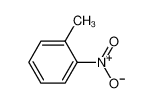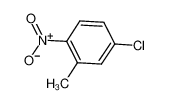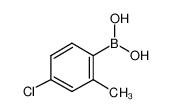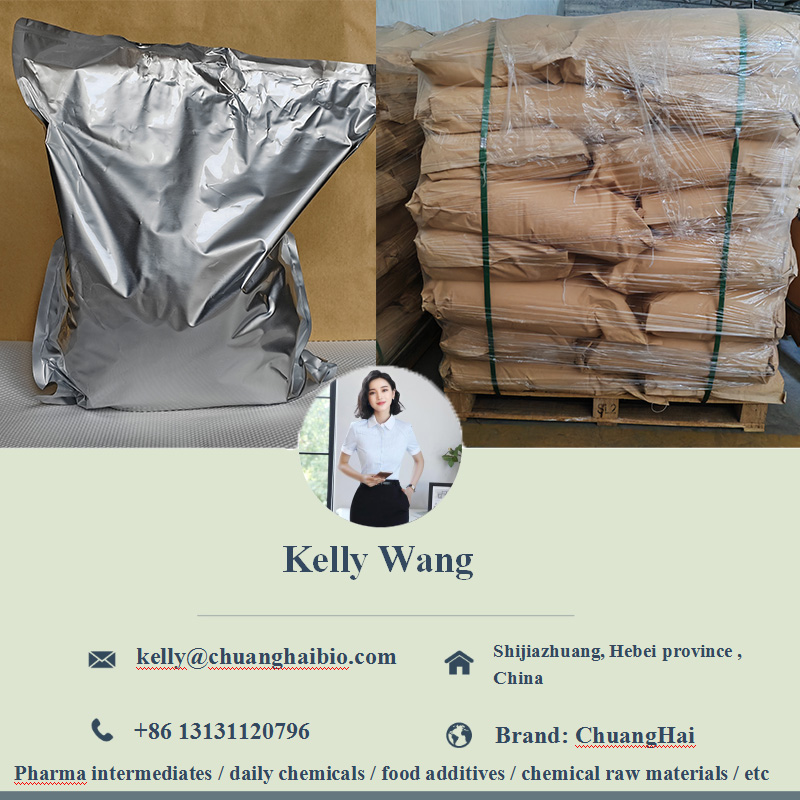1.Identification
1.1 GHS Product identifier
| Product name | 4-Chloro-2-methylaniline |
|---|
1.2 Other means of identification
| Product number | - |
|---|---|
| Other names | fastredtr11 |
1.3 Recommended use of the chemical and restrictions on use
| Identified uses | For industry use only. |
|---|---|
| Uses advised against | no data available |
1.4 Supplier's details
| Company | MOLBASE (Shanghai) Biotechnology Co., Ltd. |
|---|---|
| Address | Floor 4 & 5, Building 12, No. 1001 North Qinzhou Road, Xuhui District, Shanghai, China |
| Telephone | +86(21)64956998 |
| Fax | +86(21)54365166 |
1.5 Emergency phone number
| Emergency phone number | +86-400-6021-666 |
|---|---|
| Service hours | Monday to Friday, 9am-5pm (Standard time zone: UTC/GMT +8 hours). |
2.Hazard identification
2.1 Classification of the substance or mixture
Acute toxicity - Oral, Category 3
Acute toxicity - Dermal, Category 3
Acute toxicity - Inhalation, Category 3
Germ cell mutagenicity, Category 2
Carcinogenicity, Category 1B
Hazardous to the aquatic environment, short-term (Acute) - Category Acute 1
Hazardous to the aquatic environment, long-term (Chronic) - Category Chronic 1
2.2 GHS label elements, including precautionary statements
| Pictogram(s) |    |
|---|---|
| Signal word | Danger |
| Hazard statement(s) | H301 Toxic if swallowed H311 Toxic in contact with skin H331 Toxic if inhaled H341 Suspected of causing genetic defects H350 May cause cancer H410 Very toxic to aquatic life with long lasting effects |
| Precautionary statement(s) | |
| Prevention | P264 Wash ... thoroughly after handling. P270 Do not eat, drink or smoke when using this product. P280 Wear protective gloves/protective clothing/eye protection/face protection. P261 Avoid breathing dust/fume/gas/mist/vapours/spray. P271 Use only outdoors or in a well-ventilated area. P201 Obtain special instructions before use. P202 Do not handle until all safety precautions have been read and understood. P273 Avoid release to the environment. |
| Response | P301+P310 IF SWALLOWED: Immediately call a POISON CENTER/doctor/… P321 Specific treatment (see ... on this label). P330 Rinse mouth. P302+P352 IF ON SKIN: Wash with plenty of water/... P312 Call a POISON CENTER/doctor/…if you feel unwell. P361+P364 Take off immediately all contaminated clothing and wash it before reuse. P304+P340 IF INHALED: Remove person to fresh air and keep comfortable for breathing. P311 Call a POISON CENTER/doctor/… P308+P313 IF exposed or concerned: Get medical advice/ attention. P391 Collect spillage. |
| Storage | P405 Store locked up. P403+P233 Store in a well-ventilated place. Keep container tightly closed. |
| Disposal | P501 Dispose of contents/container to ... |
2.3 Other hazards which do not result in classification
none
3.Composition/information on ingredients
3.1 Substances
| Chemical name | Common names and synonyms | CAS number | EC number | Concentration |
|---|---|---|---|---|
| 4-Chloro-2-methylaniline | 4-Chloro-2-methylaniline | 95-69-2 | none | 100% |
4.First-aid measures
4.1 Description of necessary first-aid measures
General advice
Consult a physician. Show this safety data sheet to the doctor in attendance.
If inhaled
Fresh air, rest. Refer immediately for medical attention.
In case of skin contact
Remove contaminated clothes. Rinse skin with plenty of water or shower. Refer immediately for medical attention.
In case of eye contact
Rinse with plenty of water for several minutes (remove contact lenses if easily possible). Refer for medical attention.
If swallowed
Rinse mouth. Give one or two glasses of water to drink. Refer immediately for medical attention.
4.2 Most important symptoms/effects, acute and delayed
Inhalation, ingestion, or skin contact causes bluish tint in fingernails, lips, and ears. Headache, drowsiness, and nausea also occur. Contact with eyes causes irritation. (USCG, 1999)
4.3 Indication of immediate medical attention and special treatment needed, if necessary
Absorption, Distribution and Excretion
(14)C-LABELED 4-CHLORO-O-TOLUIDINE, WHEN ORALLY ADMIN TO WHITE RATS, WAS DEGRADED AND ELIMINATED PRIMARILY IN URINE ALONG WITH RADIOACTIVE METABOLITES. RATE OF ABSORPTION & DEGRADATION WAS SLOWER THAN FOR CHLORDIMEFORM.
5.Fire-fighting measures
5.1 Extinguishing media
Suitable extinguishing media
Fire Extinguishing Agents: Water, dry chemical (USCG, 1999)
5.2 Specific hazards arising from the chemical
Special Hazards of Combustion Products: Toxic oxides of nitrogen and hydrochloric acid fumes may form. (USCG, 1999)
5.3 Special protective actions for fire-fighters
Wear self-contained breathing apparatus for firefighting if necessary.
6.Accidental release measures
6.1 Personal precautions, protective equipment and emergency procedures
Use personal protective equipment. Avoid dust formation. Avoid breathing vapours, mist or gas. Ensure adequate ventilation. Evacuate personnel to safe areas. Avoid breathing dust. For personal protection see section 8.
6.2 Environmental precautions
Sweep spilled substance into covered containers. Then store and dispose of according to local regulations. Do NOT let this chemical enter the environment.
6.3 Methods and materials for containment and cleaning up
PRECAUTIONS FOR "CARCINOGENS": A high-efficiency particulate arrestor (HEPA) or charcoal filters can be used to minimize amt of carcinogen in exhausted air ventilated safety cabinets, lab hoods, glove boxes or animal rooms ... Filter housing that is designed so that used filters can be transferred into plastic bag without contaminating maintenance staff is avail commercially. Filters should be placed in plastic bags immediately after removal ... The plastic bag should be sealed immediately ... The sealed bag should be labelled properly ... Waste liquids ... should be placed or collected in proper containers for disposal. The lid should be secured & the bottles properly labelled. Once filled, bottles should be placed in plastic bag, so that outer surface ... is not contaminated ... The plastic bag should also be sealed & labelled. ... Broken glassware ... should be decontaminated by solvent extraction, by chemical destruction, or in specially designed incinerators. /Chemical Carcinogens/
7.Handling and storage
7.1 Precautions for safe handling
Avoid contact with skin and eyes. Avoid formation of dust and aerosols. Avoid exposure - obtain special instructions before use.Provide appropriate exhaust ventilation at places where dust is formed. For precautions see section 2.2.
7.2 Conditions for safe storage, including any incompatibilities
Cool. Separated from food and feedstuffs. See Chemical Dangers. Well closed. Store in an area without drain or sewer access. Provision to contain effluent from fire extinguishing.PRECAUTIONS FOR "CARCINOGENS": Storage site should be as close as practical to lab in which carcinogens are to be used, so that only small quantities required for ... expt need to be carried. Carcinogens should be kept in only one section of cupboard, an explosion-proof refrigerator or freezer (depending on chemicophysical properties ...) that bears appropriate label. An inventory ... should be kept, showing quantity of carcinogen & date it was acquired ... Facilities for dispensing ... should be contiguous to storage area. /Chemical Carcinogens/
8.Exposure controls/personal protection
8.1 Control parameters
Occupational Exposure limit values
no data available
Biological limit values
no data available
8.2 Appropriate engineering controls
Handle in accordance with good industrial hygiene and safety practice. Wash hands before breaks and at the end of workday.
8.3 Individual protection measures, such as personal protective equipment (PPE)
Eye/face protection
Safety glasses with side-shields conforming to EN166. Use equipment for eye protection tested and approved under appropriate government standards such as NIOSH (US) or EN 166(EU).
Skin protection
Wear impervious clothing. The type of protective equipment must be selected according to the concentration and amount of the dangerous substance at the specific workplace. Handle with gloves. Gloves must be inspected prior to use. Use proper glove removal technique(without touching glove's outer surface) to avoid skin contact with this product. Dispose of contaminated gloves after use in accordance with applicable laws and good laboratory practices. Wash and dry hands. The selected protective gloves have to satisfy the specifications of EU Directive 89/686/EEC and the standard EN 374 derived from it.
Respiratory protection
Wear dust mask when handling large quantities.
Thermal hazards
no data available
9.Physical and chemical properties
| Physical state | clear dark brown Crystals |
|---|---|
| Colour | Crystalline, fused, grayish-white solid (commercial product) |
| Odour | no data available |
| Melting point/ freezing point | 122°C(lit.) |
| Boiling point or initial boiling point and boiling range | 241°C(lit.) |
| Flammability | Combustible. Gives off irritating or toxic fumes (or gases) in a fire. |
| Lower and upper explosion limit / flammability limit | no data available |
| Flash point | 38°C(lit.) |
| Auto-ignition temperature | 560°C |
| Decomposition temperature | no data available |
| pH | no data available |
| Kinematic viscosity | no data available |
| Solubility | less than 1 mg/mL at 20°C |
| Partition coefficient n-octanol/water (log value) | 2.27 |
| Vapour pressure | Pa at 25°C: 5.5 |
| Density and/or relative density | 1.14 |
| Relative vapour density | (air = 1): 4.9 |
| Particle characteristics | no data available |
10.Stability and reactivity
10.1 Reactivity
no data available
10.2 Chemical stability
Stable under recommended storage conditions.
10.3 Possibility of hazardous reactions
4-CHLORO-O-TOLUIDINE is incompatible with acids, acid chlorides, acid anhydrides, chloroformates and strong oxidizing agents. . A halide- and amine-substituted aromatic compound. Amines are chemical bases. They neutralize acids to form salts plus water. These acid-base reactions are exothermic. The amount of heat that is evolved per mole of amine in a neutralization is largely independent of the strength of the amine as a base. Amines may be incompatible with isocyanates, halogenated organics, peroxides, phenols (acidic), epoxides, anhydrides, and acid halides. Flammable gaseous hydrogen is generated by amines in combination with strong reducing agents, such as hydrides.
10.4 Conditions to avoid
no data available
10.5 Incompatible materials
no data available
10.6 Hazardous decomposition products
no data available
11.Toxicological information
Acute toxicity
- Oral: no data available
- Inhalation: no data available
- Dermal: no data available
Skin corrosion/irritation
no data available
Serious eye damage/irritation
no data available
Respiratory or skin sensitization
no data available
Germ cell mutagenicity
no data available
Carcinogenicity
Evaluation: There is sufficient evidence for the carcinogenicity of para-chloro-ortho-toluidine hydrochloride in experimental animals. There is limited evidence for the carcinogenicity of para-chloro-ortho-toluidine in humans. In formulating the overall evaluation, the Working Group took note of the fact that any salt of para-chloro-orthotoluidine with a strong acid can be expected to behave chemically in a manner similar to the hydrochloride salt in solution and in vivo. Overall evaluation: para-Chloro-ortho-toluidine and its strong acid salts are probably carcinogenic to humans (Group 2A).
Reproductive toxicity
no data available
STOT-single exposure
no data available
STOT-repeated exposure
no data available
Aspiration hazard
no data available
12.Ecological information
12.1 Toxicity
- Toxicity to fish: no data available
- Toxicity to daphnia and other aquatic invertebrates: no data available
- Toxicity to algae: no data available
- Toxicity to microorganisms: no data available
12.2 Persistence and degradability
5 ppm of 14C labeled 4-chloro-o-toluidine was added to soil (pH 7.5, and organic matter, sand, silt, and clay contents of 3.4, 36.6, 28.2, and 35.2%, respectively); nearly 20% of the added 4-chloro-o-toluidine was metabolized to CO2 over a period of 40 days under aerobic conditions(1). Evolution of CO2 from the ring-labelled compound gives evidence for biologically mediated ring cleavage. Autoclaved soil control samples with added 4-chloro-o-toluidine did not produce CO2(1). Incubation of 4-chloro-o-toluidine with aniline oxidase or L-3 peroxidase obtained from the soil fungus Geotrichum candidum resulted in the formation of 2,2'-dimethyl-4,4'dichloroazobenzene through polymerizing transformations of the original compound(2). 4-Chloro-o-toluidine from a petrochemical industrial process wastewater at an initial concentration of 110 mg/l with activated sludge as an inoculum and a one day acclimation period gave 16% removal by measuring COD(Mn) and 7% removal of TOC after a 24 hour period under aerobic conditions(3). This compound was considered to be non-biodegradable using this test(3). Gas chromatography however, used to measure biodegradation during this same 24 hour period, showed better degradability of 4-chloro-o-toluidine suggesting that structural breakdown of this compound occurs prior to oxidation of carbon into carbon dioxide(3). 0% biodegradation of 4-chloro-o-toluidine was shown via BOD in a 2 week experiment using activated sludge as an inoculum and with 4-chloro-o-toluidine present at 100 mg/ml(4).
12.3 Bioaccumulative potential
Bioconcentration of 4-chloro-o-toluidine was measured in carp over a 6 week time period. At concentrations of 0.34 mg/ml and 0.034 mg/ml 4-chloro-o-toluidine, BCF values of 7.7-12 and <35 respectively, were reported(1). These values suggest that bioconcentration of 4-chloro-o-toluidine in aquatic organisms is not an important fate process for this compound(SRC).
12.4 Mobility in soil
The Koc for 4-chloro-o-toluidine was estimated as 410(SRC), using a recommended regression-derived equation(1) and an estiamted log Kow of 2.27(2,SRC). According to a suggested classification scheme(3), this estimated Koc value suggests that 4-chloro-o-toluidine has moderate mobility in soil(SRC). 14C labelled 4-chloro-o-toluidine was added to autoclaved soil (pH 7.5, and organic matter, sand, silt, and clay contents of 3.4, 36.6, 28.2, and 35.2%, respectively) and incubated for several weeks; 12.2% of the radioactive label was removed as volatiles, 25% was recovered in a Soxhlet extract, and 55.1% of the radioactive label was obtained after Soxhlet extraction using Bleidner distillation (bound residue fraction)(4). This suggests that a significant portion of the 4-chloro-o-toluidine is bound strongly by this soil(4). Over a 24 hour time period, 34% of applied 4-chloro-o-toluidine was found in the bound residue fraction(5). Binding due to the high reactivity of the aromatic amino group to humus or soil organic matter rather than to clay particles is proposed as a reason for the soil binding ability of anilines(4,5). Low adsorption is observed at a neutral pH with pure clay minerals or soils for substituted anilines(5).
12.5 Other adverse effects
no data available
13.Disposal considerations
13.1 Disposal methods
Product
The material can be disposed of by removal to a licensed chemical destruction plant or by controlled incineration with flue gas scrubbing. Do not contaminate water, foodstuffs, feed or seed by storage or disposal. Do not discharge to sewer systems.
Contaminated packaging
Containers can be triply rinsed (or equivalent) and offered for recycling or reconditioning. Alternatively, the packaging can be punctured to make it unusable for other purposes and then be disposed of in a sanitary landfill. Controlled incineration with flue gas scrubbing is possible for combustible packaging materials.
14.Transport information
14.1 UN Number
| ADR/RID: UN2239 | IMDG: UN2239 | IATA: UN2239 |
14.2 UN Proper Shipping Name
| ADR/RID: CHLOROTOLUIDINES, SOLID |
| IMDG: CHLOROTOLUIDINES, SOLID |
| IATA: CHLOROTOLUIDINES, SOLID |
14.3 Transport hazard class(es)
| ADR/RID: 6.1 | IMDG: 6.1 | IATA: 6.1 |
14.4 Packing group, if applicable
| ADR/RID: III | IMDG: III | IATA: III |
14.5 Environmental hazards
| ADR/RID: yes | IMDG: yes | IATA: yes |
14.6 Special precautions for user
no data available
14.7 Transport in bulk according to Annex II of MARPOL 73/78 and the IBC Code
no data available
15.Regulatory information
15.1 Safety, health and environmental regulations specific for the product in question
| Chemical name | Common names and synonyms | CAS number | EC number |
|---|---|---|---|
| 4-Chloro-2-methylaniline | 4-Chloro-2-methylaniline | 95-69-2 | none |
| European Inventory of Existing Commercial Chemical Substances (EINECS) | Listed. | ||
| EC Inventory | Listed. | ||
| United States Toxic Substances Control Act (TSCA) Inventory | Listed. | ||
| China Catalog of Hazardous chemicals 2015 | Not Listed. | ||
| New Zealand Inventory of Chemicals (NZIoC) | Not Listed. | ||
| Philippines Inventory of Chemicals and Chemical Substances (PICCS) | Not Listed. | ||
| Vietnam National Chemical Inventory | Not Listed. | ||
| Chinese Chemical Inventory of Existing Chemical Substances (China IECSC) | Not Listed. | ||
16.Other information
Information on revision
| Creation Date | Aug 12, 2017 |
|---|---|
| Revision Date | Aug 12, 2017 |
Abbreviations and acronyms
- CAS: Chemical Abstracts Service
- ADR: European Agreement concerning the International Carriage of Dangerous Goods by Road
- RID: Regulation concerning the International Carriage of Dangerous Goods by Rail
- IMDG: International Maritime Dangerous Goods
- IATA: International Air Transportation Association
- TWA: Time Weighted Average
- STEL: Short term exposure limit
- LC50: Lethal Concentration 50%
- LD50: Lethal Dose 50%
- EC50: Effective Concentration 50%
References
- IPCS - The International Chemical Safety Cards (ICSC), website: http://www.ilo.org/dyn/icsc/showcard.home
- HSDB - Hazardous Substances Data Bank, website: https://toxnet.nlm.nih.gov/newtoxnet/hsdb.htm
- IARC - International Agency for Research on Cancer, website: http://www.iarc.fr/
- eChemPortal - The Global Portal to Information on Chemical Substances by OECD, website: http://www.echemportal.org/echemportal/index?pageID=0&request_locale=en
- CAMEO Chemicals, website: http://cameochemicals.noaa.gov/search/simple
- ChemIDplus, website: http://chem.sis.nlm.nih.gov/chemidplus/chemidlite.jsp
- ERG - Emergency Response Guidebook by U.S. Department of Transportation, website: http://www.phmsa.dot.gov/hazmat/library/erg
- Germany GESTIS-database on hazard substance, website: http://www.dguv.de/ifa/gestis/gestis-stoffdatenbank/index-2.jsp
- ECHA - European Chemicals Agency, website: https://echa.europa.eu/





















-
-

-
-
-

-
-
-

-
-
-

-
-
-

-
-
-

-
-
-

-
-
-

-
-
-

-
-
-

-
More Suppliers>>Baoji Guokang Bio-Technology Co., Ltd
CHINA
Purity: 98%
Lead Time: 30 Day(s)
Price: -
Wenzhou Win-Win Chemical Co., Ltd.
CHINA
Purity: 97%
Lead Time: 7 Day(s)
Price: -
Hangzhou J&H Chemical Co., Ltd.
CHINA
Purity: 98%
Lead Time: 7 Day(s)
Price: -
Henan Coreychem Co.,Ltd
CHINA
Purity: 0.98%
Lead Time: 3 Day(s)
Price: -
Shanghai Jizhi Biochemical Technology Co., Ltd.
CHINA
Purity: 98%
Lead Time: 1 Week(s)
Price: -
Hangzhou DayangChem Co., Ltd
CHINA
Purity: 99%
Lead Time: 7 Day(s)
Price: -
Hangzhou Shangjie Chemical Co., Ltd.
CHINA
Purity: 98%
Lead Time: 7 Day(s)
Price: -
Skyrun Industrial Co., Limited
CHINA
Purity: 99%
Lead Time: 7 Day(s)
Price: -
Hangzhou Bingochem Co., Ltd.
CHINA
Purity: 97%
Lead Time: 7 Day(s)
Price: -
CHINA
Purity: 99%
Lead Time: 1 Day(s)
Price: Min $1 /kg